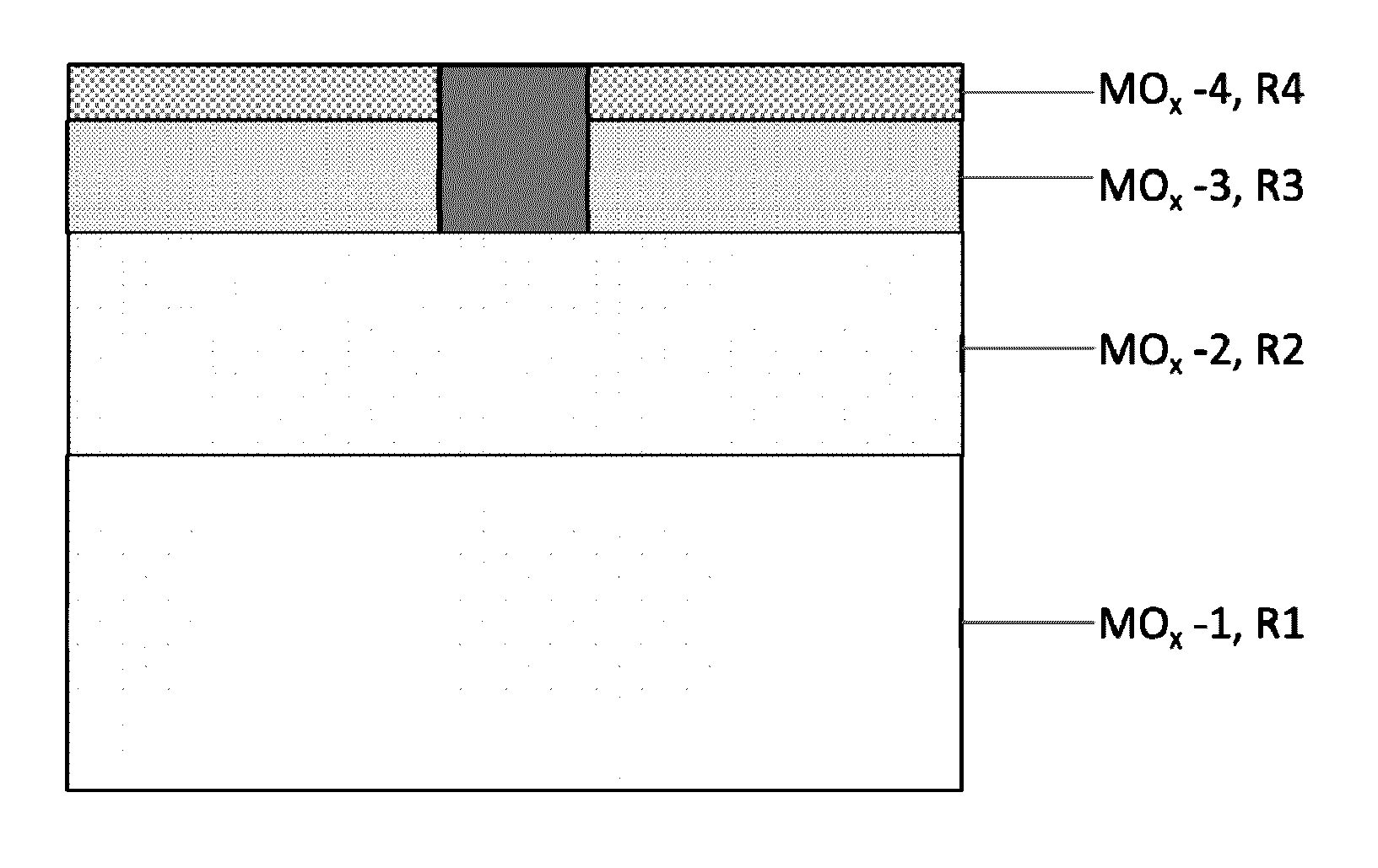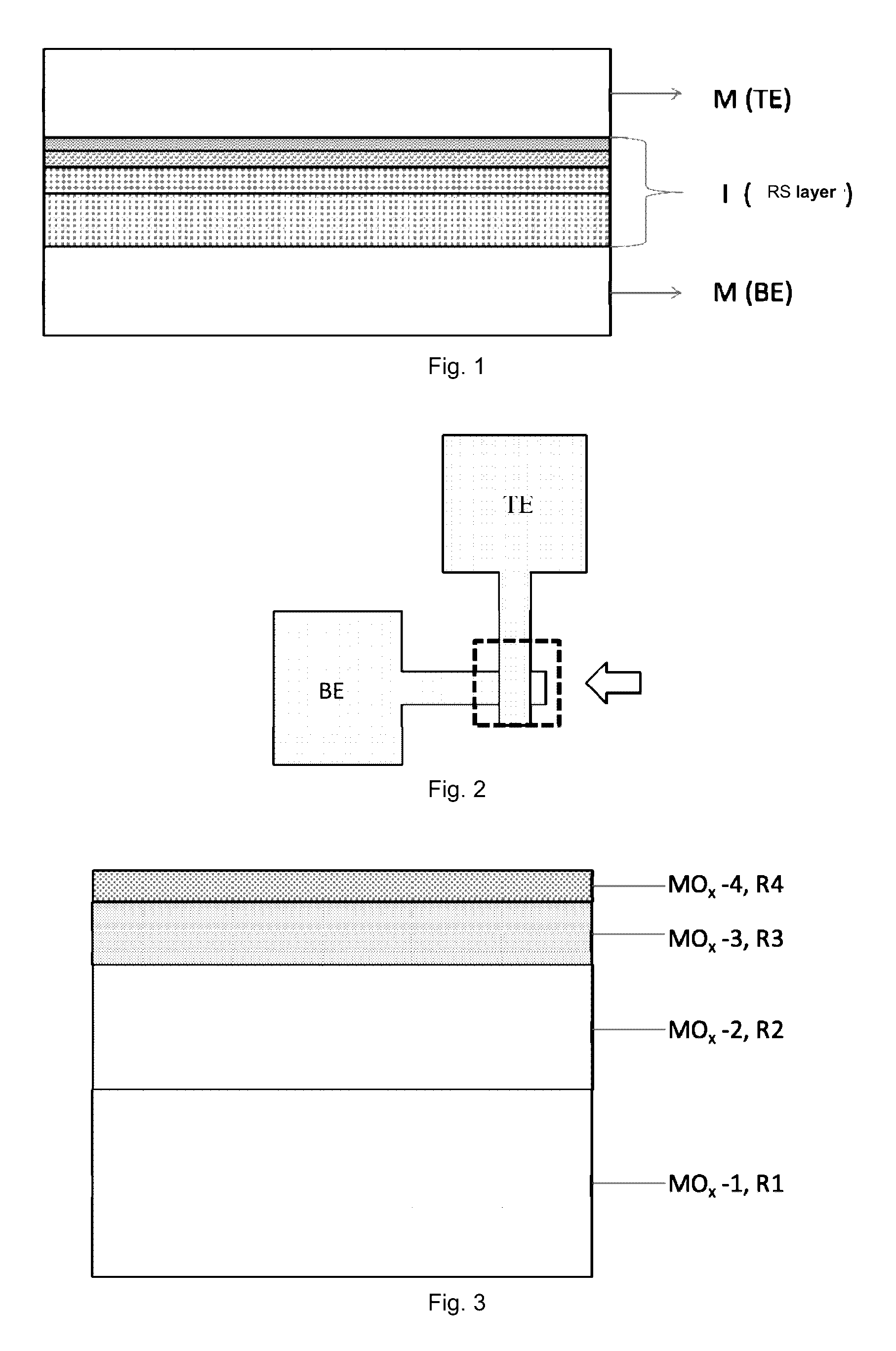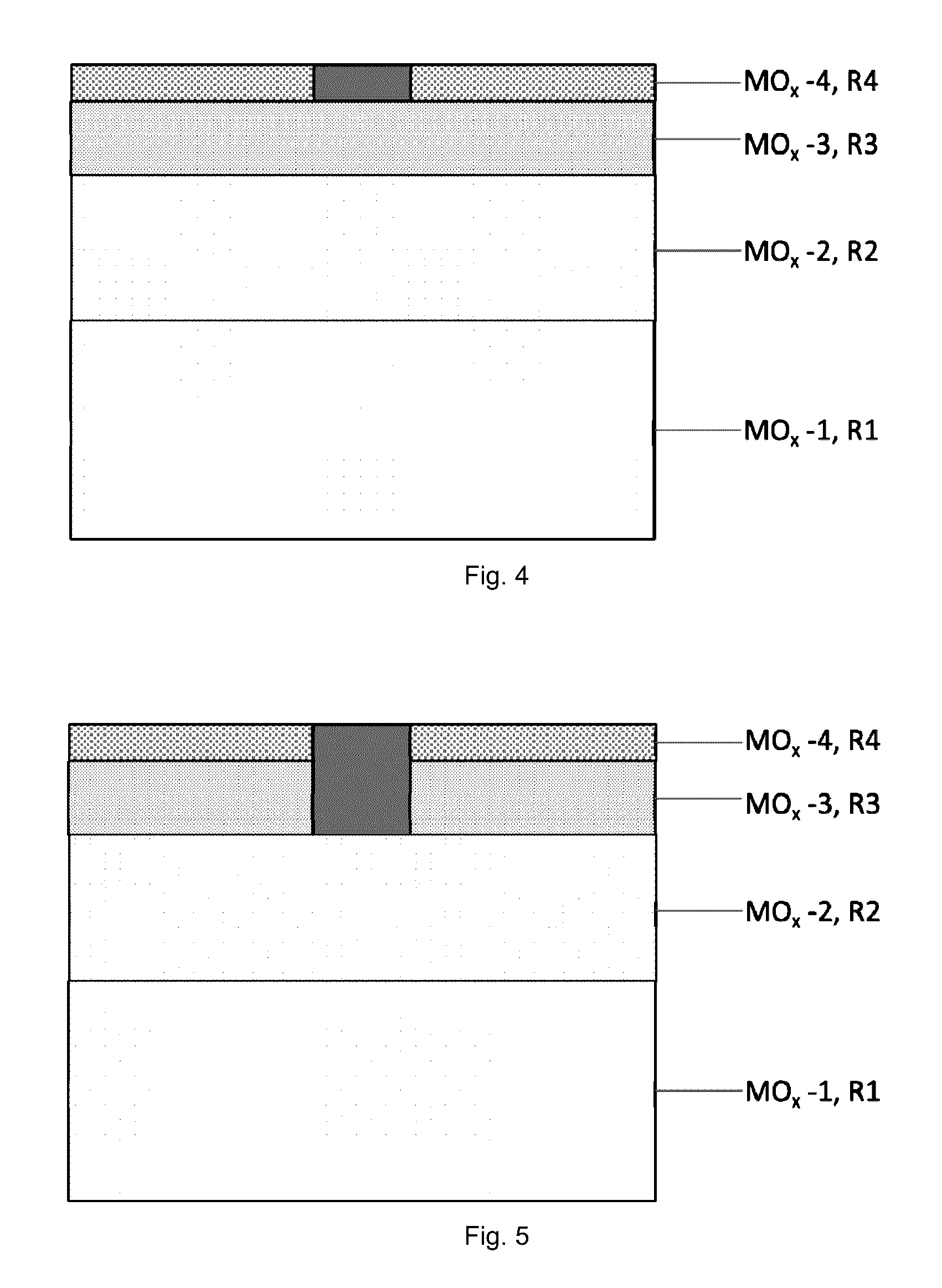Resistive random access memory with high uniformity and low power consumption and method for fabricating the same
a random access and high uniformity technology, applied in the field of resistive random access memory, can solve the problems of affecting the achievement of low power consumption, advancing resistive random access, and increasing the severity of reliability problems, and achieve the effects of low power consumption storage, high uniformity, and controlled accurately
- Summary
- Abstract
- Description
- Claims
- Application Information
AI Technical Summary
Benefits of technology
Problems solved by technology
Method used
Image
Examples
embodiment 1
[0043
[0044]The present invention is described below in further detail with TaOx resistive random access memory as an example with reference to the accompanying drawings and specific embodiments.
[0045]The fabrication process for 2-bit resistive random access memory cell with high uniformity and low power consumption in accordance with the present invention is provided as follows:
[0046]1) preparing an insulating layer, comprising growing SiO2 on a Si substrate 1 as the insulating layer 2, as shown in FIG. 7;
[0047]2) preparing a bottom electrode, comprising sputtering metal Ti / M, wherein Ti is used for an adhesion layer, M is used for the bottom electrode 3, as shown in FIG. 8, M is a conductive metal or a metal nitride, such as Pt, Ag, Ir, Ru, Au, Pd, W, Ni, Cu, Ti, TiN, TaN, WNx or the like;
[0048]3) preparing a first layer of resistive material film, wherein the first layer 4-1 of TaOx resistive material film is prepared, with a thickness of 30 nm, oxygen partial pressure of 3% and a...
PUM
 Login to View More
Login to View More Abstract
Description
Claims
Application Information
 Login to View More
Login to View More - R&D
- Intellectual Property
- Life Sciences
- Materials
- Tech Scout
- Unparalleled Data Quality
- Higher Quality Content
- 60% Fewer Hallucinations
Browse by: Latest US Patents, China's latest patents, Technical Efficacy Thesaurus, Application Domain, Technology Topic, Popular Technical Reports.
© 2025 PatSnap. All rights reserved.Legal|Privacy policy|Modern Slavery Act Transparency Statement|Sitemap|About US| Contact US: help@patsnap.com



